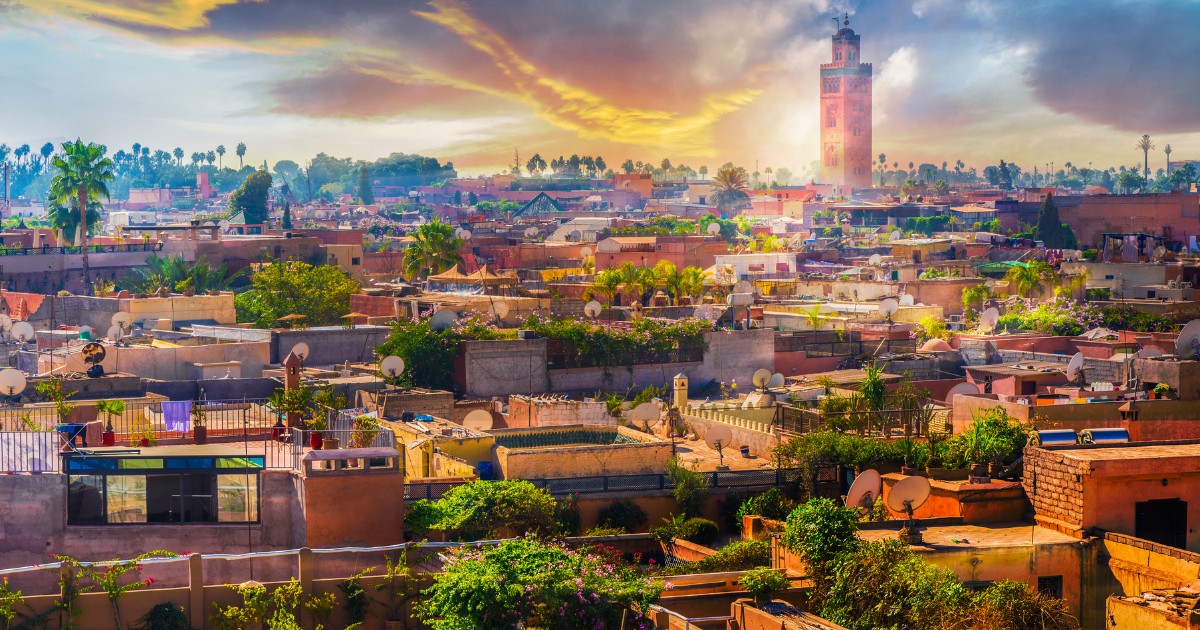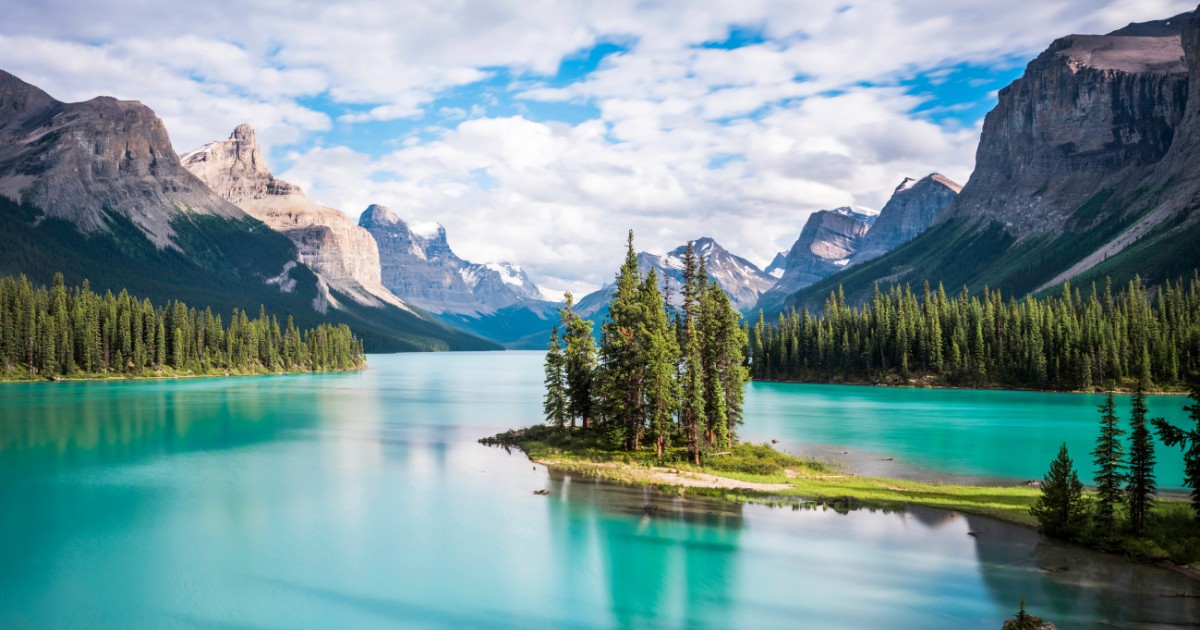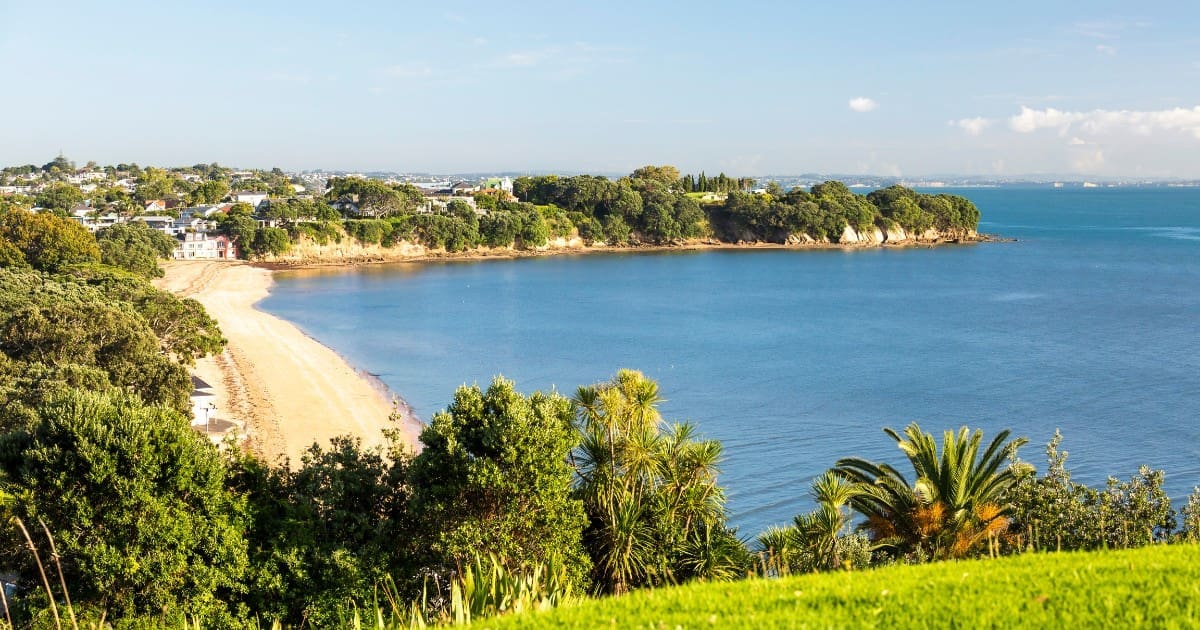I just got back from the most amazing trip to Marrakech, and guess what? I did so many fun things to do in Marrakech for free! Yep, you heard that right – I had a blast in Morocco’s Red City without breaking the bank.
Now, I bet you’re thinking, “No way, there can’t be that many free things to do in Marrakech!” But trust me, there are. I’m going to share all my secrets with you so that you can have an unforgettable time in this magical city without worrying about your wallet.
Attractions and Activities to See and Do in Marrakech for Free
To give you a quick overview of the amazing free things to do in Marrakech, I’ve put together this handy table. It covers the best times to go and how much time you should plan to spend at each activity.
| Free Things to Do | Best Time to Go | Estimated Time |
|---|---|---|
| Explore Jemaa el-Fnaa Square | Evening | 2-3 hours |
| Wander through the Medina | Morning | 3-4 hours |
| Admire the Koutoubia Mosque | Anytime | 30 minutes |
| Stroll in the Bahia Palace Gardens | Morning | 1 hour |
| Relax in the Menara Gardens | Late Afternoon | 1-2 hours |
| See the Majorelle Garden Exterior | Early Morning | 30 minutes |
| Get Lost in the City Streets | Early Morning | 2-3 hours |
| Visit Local Markets | Morning | 2-3 hours |
| Attend Cultural Events | Varies | Varies |
| Join Free Walking Tours | Morning | 2-3 hours |
These are just a few of the free experiences Marrakech has to offer. As we move on, I’ll tell you about each of these activities in more detail. So, let’s get started and explore the best free things to do in Marrakech together!
Soak Up the Sights and Sounds of Jemaa el-Fnaa Square
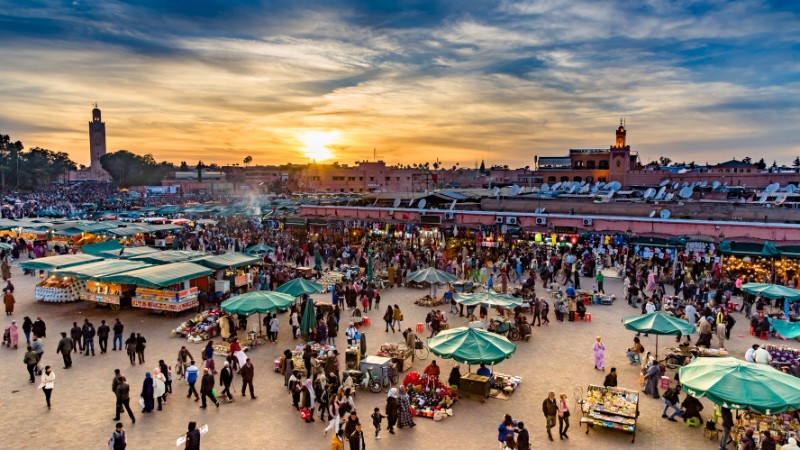
First up, let’s talk about Jemaa el-Fnaa. This square is the heart and soul of Marrakech, and it’s always buzzing with life. It’s like a huge outdoor theater where the show never ends, and the best part is that it’s completely free to enjoy!
Here, you’ll see snake charmers playing their flutes to make the snakes dance, acrobats doing crazy flips and tricks, and storytellers sharing tales that have been passed down for generations.
Have Fun in Jemaa el-Fnaa Square During the Day
During the day, Jemaa el-Fnaa is super busy and full of life. You can spend hours walking around and exploring all the different stalls.
They sell everything from spices and oils to colorful fabrics and beautiful jewelry. Even if you don’t want to buy anything, just looking at all the cool stuff is an adventure on its own.
Make sure you don’t miss out on these incredible things to do in Jemaa el-Fnaa during the day:
| Activity | What It Is | Price |
|---|---|---|
| Drink Fresh Orange Juice | Sip on refreshing juice from local vendors | 4 dirhams ($0.4) |
| Get a Henna Tattoo | Have a temporary tattoo designed by skilled artists | 20-50 dirhams ($2-5) |
| Try Local Street Food | Sample grilled meats, sandwiches, pastries, and more | 5-30 dirhams ($0.50-3) |
Experience the Magic of Jemaa el-Fnaa Square at Night
At night, Jemaa el-Fnaa turns into a whole different world. The air is filled with the smell of delicious Arabian food cooking, like kebabs and tagines. Food stalls pop up everywhere, and each one is trying to get your attention with their mouthwatering dishes.
Here are my top tips for enjoying Jemaa el-Fnaa at night without spending a dirham:
- Get there early to get a good spot: The square gets really crowded at night, so if you want a table at one of the food stalls, make sure to arrive early, around 6:00 PM to 7:00 PM.
- Try Moroccan foods: This is your chance to taste some amazing Moroccan food, so be brave and order something you’ve never had before! Some must-try dishes include tangia (slow-cooked meat), harira (a hearty soup), and zaalouk (an eggplant and tomato dip).
- Enjoy the music and dancing: At night, the square is filled with live music and people dancing. You’ll hear traditional Berber music, Gnawa music (a mixture of African and Islamic spiritual songs), and Andalusian music. Don’t be afraid to join in and dance along!
Jemaa el-Fnaa is located in the heart of the Medina, just a short walk from the Koutoubia Mosque. It’s easily accessible on foot or by taxi.
Take a Stroll at the Winding Streets of the Medina

Next up, let’s explore the Medina, which is the oldest part of Marrakech. This UNESCO world heritage site is like a giant maze with narrow streets, hidden courtyards, and old buildings that will make you feel like you’ve traveled back in time. It’s easy to get lost in the Medina, but that’s all part of the fun!
Get Lost in the Medina and Love It
One of the best things about the Medina is the feeling of discovery. Every time you turn a corner, you might find something new and surprising.
You might see a tiny workshop where people are making beautiful pots and pans, or a hidden riad (a traditional Moroccan house) with a peaceful courtyard and the smell of orange blossoms in the air.
Some of the artisans and workshops you might encounter include:
- Copper and brass workshops: Watch as skilled craftsmen hammer intricate designs into copper and brass plates, trays, and lamps.
- Leather workshops: See how leather is dyed and crafted into beautiful bags, shoes, and jackets.
- Carpet weavers: Observe the traditional art of carpet weaving and marvel at the intricate designs and vibrant colors.
- Woodcarving workshops: Admire the skill and precision of woodcarvers as they create beautiful decorative pieces and furniture.
Here are some tips for making the most of your Medina adventure:
| Tips | Why It’s Good |
|---|---|
| Bring a map but don’t be scared to get lost | Find cool stuff and places not on the main streets |
| Try to get lower prices from shop owners | Pay less for things, but be nice and smile |
| Wear clothes that aren’t too showy | Be respectful and stay cool in the heat |
Some popular souvenirs and crafts to look out for in the Medina include:
- Moroccan slippers (babouches): These colorful, comfortable slippers are a must-have souvenir. You can find them in a variety of styles and colors.
- Ceramics and pottery: From tagines to colorful plates and bowls, Moroccan ceramics are both beautiful and functional.
- Spices and herbs: Stock up on fragrant spices like saffron, cumin, and paprika, as well as herbs like mint and verbena.
- Argan oil: This multi-purpose oil is great for hair, skin, and cooking. Make sure to buy pure, high-quality argan oil from a reputable Moroccan vendor.
Use All Your Senses While Exploring the Medina
The Medina is a travel destination that will awaken all your senses. The air smells like a mix of spices, incense, and leather.
At the Medina, you’ll hear the sounds of people selling their goods, kids playing, and donkeys walking by. And everywhere you look, you’ll see bright colors, intricate mosaics, and amazing Moroccan architecture.
Don’t leave the Medina without doing these free things:
- Visit a traditional bakery: Try some fresh-baked bread from one of the many bakeries in the Medina. It smells so good! Some popular Moroccan breads include khobz (round, flat bread), msemen (square, flaky bread), and baghrir (thin, spongy pancakes).
- Check out the tanneries: The tanneries are where they turn animal hides into leather. It’s a really interesting process to watch, but be warned – it can be a bit smelly! The most famous tanneries in Marrakech are the Bab Debbagh Tanneries, located near the Bab Debbagh gate in the northeast part of the Medina.
- Find a rooftop café: Take a break from the busy streets and find a rooftop café where you can relax with a cup of mint tea and enjoy the view of the Medina from above. Some popular rooftop cafés include Café des Épices, Nomad, and Terrasse des Épices.
Walking times between popular landmarks in the Medina:
| From | To | Walking Time |
|---|---|---|
| Jemaa el-Fnaa | Bahia Palace | About 15-20 minutes |
| Jemaa el-Fnaa | Koutoubia Mosque | About 5-10 minutes |
| Jemaa el-Fnaa | Saadian Tombs | About 20-25 minutes |
| Bahia Palace | Saadian Tombs | About 10-15 minutes |
See Amazing Architecture for Free in Marrakech
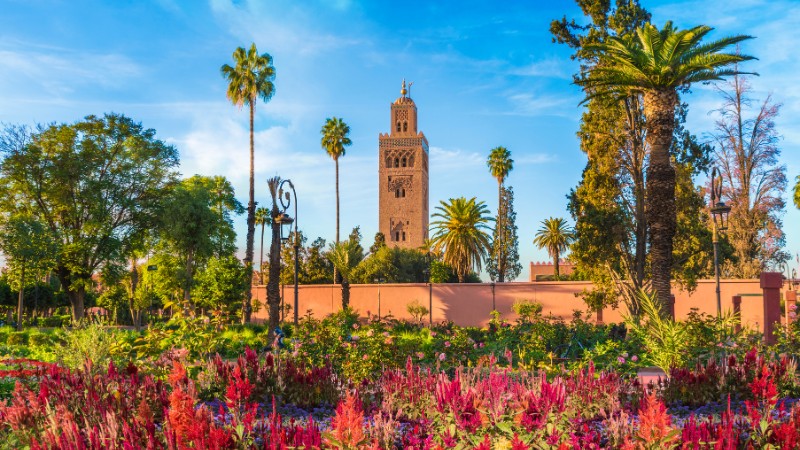
Marrakech has some of the most beautiful Islamic buildings in the world, and the best part is that you can admire many of them for free. From the tall minaret of the Koutoubia Mosque to the fancy rooms of the Bahia Palace, there are so many incredible buildings to see.
Check Out the Koutoubia Mosque
The Koutoubia Mosque is the biggest mosque in Marrakech, and it’s a must-see. Its minaret (the tall tower) is from the 12th century and can be seen from all over the city.
The mosque of Koutoubia was built during the reign of the Almohad Caliph Yaqub al-Mansur and is an excellent example of Almohad architecture.
Even though non-Muslims can’t go inside the mosque, you can still admire how amazing it looks from the outside and take a nice walk in the gardens around it.
Wander Through the Bahia Palace Gardens
The Bahia Palace was built in the late 1800s and shows how fancy and luxurious the lives of rich Moroccans were back then. It was built by Grand Vizier Si Moussa and later expanded by his son Abu ‘Bou’ Ahmed. The palace features a mix of Islamic and Moroccan architecture styles, with stunning tile work, intricate stucco carvings, and beautiful gardens.
While you have to pay to go inside the palace, you can still walk around the beautiful gardens and courtyards for free. Take some time to admire the detailed tile work, the orange trees, and the peaceful fountains.
Here are more free buildings you should check out in Marrakech:
- Saadian Tombs: These are beautiful tombs from the 16th century that are hidden in the Medina. They were built during the reign of Sultan Ahmad al-Mansur and feature intricate marble and gold decorations. Sometimes you can see them for free from the outside or visit when they don’t charge admission.
- Ben Youssef Madrasa: This used to be an Islamic college and is now a museum. It was built in the 14th century and was one of the largest madrasas in North Africa. It has stunning Moroccan architecture with detailed carvings, colorful tiles, and a peaceful courtyard. You can admire the outside for free.
- Bab Agnaou: This is an impressive gate from the 12th century that leads into the Medina. It was built during the Almohad dynasty and features beautiful stone carvings and inscriptions. Check out its cool carvings and how big it is.
Find Peace in Marrakech’s Gardens and Parks
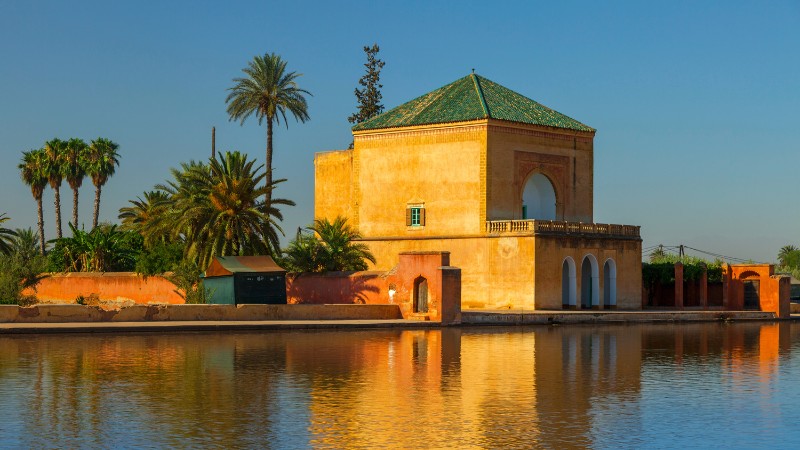
When you need a break from the busy city, head to one of Marrakech’s many gardens and parks. These green spaces are perfect for a relaxing walk, a picnic, or just a quiet moment to yourself.
Chill Out in the Menara Gardens
The Menara Gardens are a big olive grove with a huge pool in the middle. They were built in the 12th century during the reign of the Almohad dynasty.
They say that the old Saadian rulers used to come here for romantic dates. Now, it’s a popular spot for both locals and tourists to relax, breathe in the fresh air, and enjoy the amazing view of the Atlas Mountains in the distance.
The gardens are home to a variety of plants and trees, including olive trees, palm trees, and fruit trees like pomegranate and fig. You might also spot some local wildlife, such as birds and lizards.
Traveling Tip: The best times to visit the Menara Gardens are in the morning or late afternoon when the weather is cooler and the light is perfect for photos.
See the Colors of the Jardin Majorelle for Free
The Jardin Majorelle is a garden that was made by French painter Jacques Majorelle in the 1920s. It’s full of bright colors and cool plants. Majorelle spent over 40 years creating this stunning garden, which features a variety of exotic plants from around the world, including cacti, palm trees, and bamboo.
The garden is also home to the famous “Majorelle blue” color, which Majorelle used extensively in his paintings and in the garden itself. In the 1980s, the garden was bought and restored by fashion designers Yves Saint Laurent and Pierre Bergé.
While you have to pay to go inside the garden, you can still see how beautiful it is from the outside and walk around the nearby Yves Saint Laurent Museum’s gardens for free.
Traveling Tip: The best times to visit the Jardin Majorelle are early in the morning (around 8:00 AM) or later in the afternoon (around 5:00 PM) to avoid the crowds and heat.
More free parks and gardens to visit in Marrakech:
- Cyber Park (Arsat Moulay Abdeslam): This modern park in the middle of the city has free Wi-Fi, shady places to sit, and a peaceful vibe. It’s a great spot to relax and catch up on emails or social media.
- Agdal Gardens: These old gardens from the 12th century have big orchards, pools, and walking paths. They were built during the Almohad dynasty and later expanded during the Saadian and Alaouite dynasties.
- Lalla Hasna Park: This quiet park has lots of trees, flowers, and a playground, making it perfect for families. It’s named after Princess Lalla Hasna, the youngest daughter of the late King Hassan II.
Experience Local Life in Marrakech
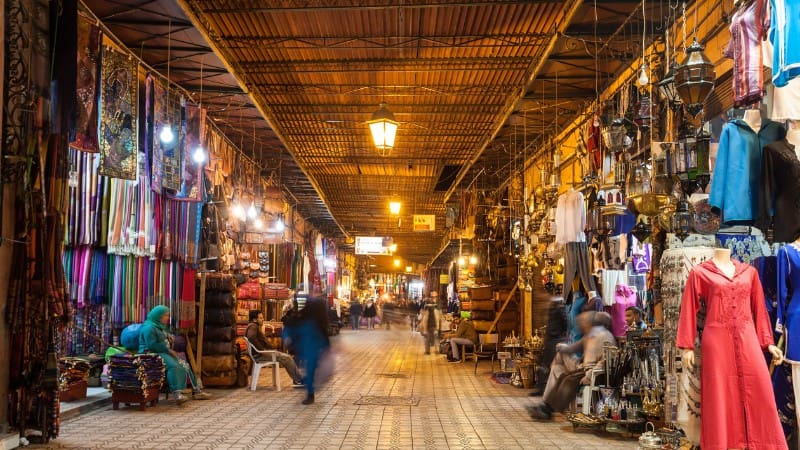
Traveling is all about experiencing different cultures, and in Marrakech, you don’t need to spend money to do that. From going to free cultural events to simply watching the locals go about their daily lives, there are many ways to connect with the real Marrakech without spending a dirham.
People-Watch in Djemaa el-Fna Square
The best place to people-watch in Marrakech is definitely Djemaa el-Fna square. Grab a seat at a café, order a cup of mint tea, and watch the world go by. You’ll see traditional musicians, storytellers, snake charmers, and henna artists, all adding to the lively atmosphere of the square.
Some traditional Moroccan music and dance styles you might encounter include:
- Gnawa music: A spiritual style of music that combines Islamic Sufism with African rhythms and dance. Gnawa musicians often play the guembri (a three-stringed lute) and sing in a mixture of Arabic and sub-Saharan African languages.
- Berber music: Traditional music of the Berber people, featuring instruments like the bendir (frame drum), the tariqa (flute), and the rebab (a type of fiddle). Berber music often celebrates nature, love, and daily life.
- Andalusian music: A classical style of music that originated in Andalusia (southern Spain) and later spread to Morocco. It features a variety of instruments, including the oud (lute), the qanun (zither), and the rebab, as well as vocal performances.
Explore the Local Markets in Marrakech
Marrakech’s markets are a feast for the senses. Walk through the stalls, chat with the friendly vendors, and soak up the vibrant energy. You’ll find everything from fresh fruits and spices to traditional crafts and souvenirs.
Some common Arabic and French phrases that can help you interact with locals:
| English | Arabic | French |
|---|---|---|
| Hello | Salam Aleikum | Bonjour |
| Yes | Na’am | Oui |
| No | La’a | Non |
| Thank you | Shukran | Merci |
| No, thank you | La shukran | Non, merci |
| Please | Min fadlak | S’il vous plaît |
| How much is this? | Bikam hada? | C’est combien? |
| That’s too expensive | Ghali bezzaf | C’est trop cher |
| Okay | Wakha | D’accord |
| Can it be less? | Mumkin aqall? | Peut-être moins? |
| Goodbye | Ma’a salama | Au revoir |
| Do you have…? | Hal ‘indak…? | Avez-vous…? |
| I’m just looking | Ana faqat anzur | Je regarde seulement |
| I like this | Hada yu’jibuni | Ça me plaît |
Since Morocco is a cultural hub, there are more free things to explore other than visiting Marrakech markets. Here are some more free cultural experiences in Marrakech:
- Visit a local mosque: Non-Muslims can’t go inside the prayer halls, but you can often visit the courtyards and admire the beautiful architecture from the outside. Some mosques, like the Tin Mal mosque, even offer free guided tours of the interior at certain times of the day.
- Attend a Moroccan wedding: Weddings are a big deal in Moroccan culture and are celebrated with music, dancing, and yummy food. Traditional Moroccan weddings often last for several days and include ceremonies like the henna party, where the bride’s hands and feet are decorated with intricate henna designs.
- Learn some Arabic or French: Even learning a few basic phrases in Arabic or French will go a long way in Marrakech. The locals will appreciate your effort to speak their language and will often be more than happy to help you practice. You can also take free language classes or workshops at some local cultural centers or libraries.
Discover More of Marrakech with Free Walking Tours
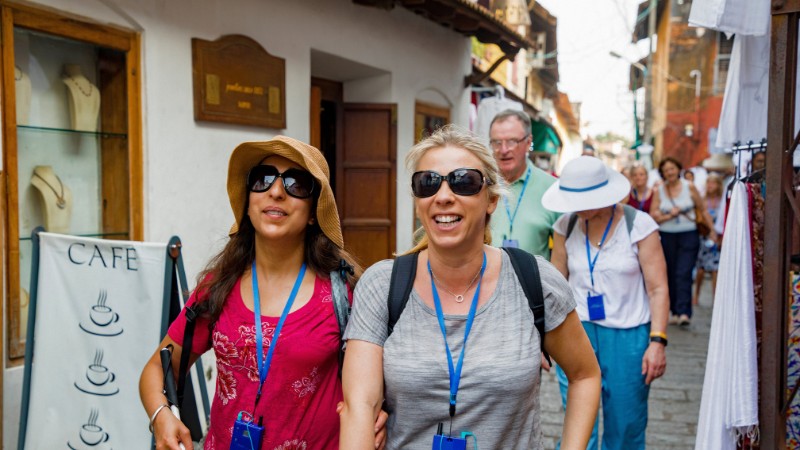
A great way to explore Marrakech and learn about its history and culture is by joining a free walking tour. These tours are usually led by local guides who know the city inside out and can show you all the hidden gems.
Many companies offer free walking tours in Marrakech. You can usually find them advertised online, at your hotel or hostel, or by asking around in popular Marrakech tourist spots.
Some popular free walking tours in Marrakech include:
| Walking Tour | Highlights | Schedule | Starting Point |
|---|---|---|---|
| Marrakech Free Walking Tour | Bahia Palace, Saadian Tombs, Koutoubia Mosque | Daily at 10:00 AM and 6:00 PM | Jemaa el-Fnaa square |
| Medina of Marrakech Free Walking Tour | Markets, workshops, palaces | Daily at 9:30 AM | Koutoubia Mosque |
| Gueliz and Hivernage Free Walking Tour | Art galleries, cafes, landmarks | Every Saturday at 10:00 AM | Place du 16 Novembre |
Here are some tips for enjoying free walking tours in Marrakech:
- Book ahead: While most free walking tours don’t require a reservation, it’s a good idea to book in advance, especially during busy times, to make sure you get a spot.
- Don’t forget to tip: Remember that free walking tours are tip-based, so be sure to tip your guide based on your budget and how much you enjoyed the tour. A tip of around 50-100 dirhams ($5-10) per person is a good starting point.
- Wear comfy shoes: You’ll be doing a lot of walking, so wear comfortable shoes to avoid sore feet. Also, bring a hat, sunscreen, and water to stay comfortable in the heat.
- Ask questions: Don’t be shy to ask your guide questions about Marrakech’s history, culture, and daily life. They’re usually happy to share their knowledge and personal experiences.
The average duration of a free walking tour in Marrakech is around 2-3 hours, and they usually involve a moderate amount of walking. Most tours cover a distance of 2-4 kilometers (1.2-2.5 miles) and include several stops along the way.
Trust Your Gut (and Your Map) While Wandering Around Marrakech
Don’t be afraid to follow your curiosity and explore the less touristy parts of Marrakech. But remember to bring a map or download an offline map on your phone, just in case you need to find your way back.
Be sure to follow these tips for wandering around Marrakech without spending money:
- Start early: Beat the heat and the crowds by starting your adventures early in the morning, around 8:00 AM or 9:00 AM.
- Take breaks: Marrakech can be overwhelming at times, so make sure to take breaks throughout the day to rest and recharge. Stop at a local café for a mint tea or a quick snack, or find a quiet spot in a park or garden to relax.
- Enjoy the journey: Don’t rush through your explorations. Take your time, soak up the atmosphere, and enjoy the experience. Talk to locals, take lots of photos, and make memories.
- Stay safe: While Marrakech is generally a safe city, it’s always a good idea to be aware of your surroundings and take basic safety precautions. Keep an eye on your belongings, especially in crowded areas, and avoid walking alone at night in unfamiliar neighborhoods.
So there you have it, my friends! Marrakech is an incredible city that you can enjoy without spending a fortune. From the lively Jemaa el-Fnaa square to the peaceful gardens and the winding streets of the Medina, there are so many amazing things to see and do for free.
I hope this guide has inspired you to explore Marrakech and experience all the incredible budget friendly travel experiences this city has to offer. Remember, the best things in life are often free, and that couldn’t be more true in Marrakech.
Can Tourists Wear Shorts in Marrakech?
In Marrakech, wearing shorts is okay in tourist spots, but they should be knee-length. It’s good to dress modestly, especially in religious or conservative areas, to respect local customs. Short shorts are not recommended.
What is the Best Month to Visit Morocco?
The best months to visit Morocco are from March to May and from September to November. During these times, the weather is mild and not too hot or cold, making it great for sightseeing and hiking. These months also tend to be less crowded with tourists.
What is the Best Currency to Use in Marrakech?
The best currency to use in Marrakech is the Moroccan Dirham (MAD). While Euros, US Dollars, and British Pounds might be accepted in some places, it’s simpler and often cheaper to use Dirhams. Make sure to exchange some money into Dirhams when you arrive in Morocco, and since Morocco mostly operates on cash, carrying cash is essential.
